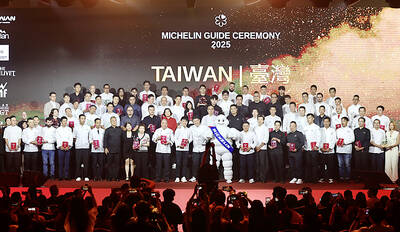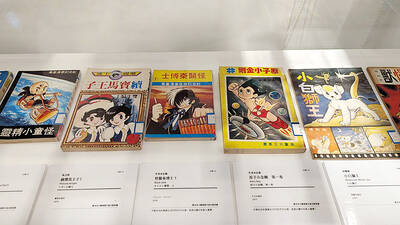A 25-year-old woman who was stung by a sea urchin when surfing in Jialeshuei (佳樂水) near Kenting (墾丁) had to undergo surgery after failing to remove the spine completely, a doctor said of the case.
After being stung by a sea urchin while surfing and removing the spine herself, a woman the doctor called A-miao (not her real name) said she still felt stinging pain in the foot and thought it was due to the wound not having healed. However, even after a second application of medicine, the wound did not get better, and without returning for follow-ups, A-miao developed severe pain in her swollen, injured foot within a few days.
The physician found at least half of a sea urchin spine was stuck in her foot when A-miao re-visited the hospital for medicine. Surgery was immediately undertaken to remove the spine following the discovery via X-ray.
Hengchun Tourism Hospital superintendent Tseng Kung-yen (曾孔彥) said symptoms of cellulitis had already developed when the patient arrived at the hospital, which led him to suspect that there was a foreign object in the foot that had caused the infection. An X-ray examination found a 1.5cm sea urchin spine in the foot buried 5cm deep under the skin, he said.
A-miao has recovered well since the surgery, but regular follow-ups and applications of medicine are still required, he added.
“I’m surprised that she could have endured the pain for 20 days,” said Chen Ming-chih (陳明智), the vice superintendent who was in charge of the operation, adding that if she had waited until the cellulitis worsened, she could have lost her foot.
Lee Chan-jung (李展榮), a marine biologist at the National Museum of Marine Biology and Aquarium in Pingtung County, said there are two kinds of poisonous sea urchins commonly seen in Taiwan: Toxopneustes pileolus, commonly known as the flower urchin, which stings with a neurotoxin, and Tripneustes gratilla, or the collector urchin, which inflicts a protein toxin.
While the Diadema setosum, or long-spined sea urchin, that had stung A-miao was not poisonous, its dense, long spines — which can reach 30cm — are armed with tiny hooks, Lee said.
A long spine with hooks can break off easily and remain in the body even though the person may think that it has been completely removed, causing the wound to fester and develop cellulitis.

Eight restaurants in Taiwan yesterday secured a one-star rating from the Michelin Guide Taiwan for the first time, while three one-star restaurants from last year’s edition were promoted to two stars. Forty-three restaurants were awarded one star this year, including 34 in Taipei, five in Taichung and four in Kaohsiung. Hosu (好嶼), Chuan Ya (川雅), Sushi Kajin (鮨嘉仁), aMaze (心宴), La Vie by Thomas Buhner, Yuan Yi (元一) and Frassi in Taipei and Front House (方蒔) in Kaohsiung received a one-star rating for the first time. Hosu is known for innovative Taiwanese dishes, while Chuan Ya serves Sichuan cuisine and aMaze specializes

Taitung County is to launch charter flights to Malaysia at the end of this year, after setting up flights to Vietnam and Thailand, the Taitung County Government said yesterday. The new charter flight services, provided by low-cost carrier Batik Air Malaysia, would be part of five-day tour packages for visits to Taitung County or Malaysia. The Batik Air charter flight, with about 200 seats, would take Malaysian tourists to Taitung on Dec. 30 and then at 12:35pm return to Kuala Lumpur with Taiwanese tourists. Another charter flight would bring the Taiwanese home on Jan. 3 next year, arriving at 5:30pm, before taking the

Taiwan High Speed Rail Corp. (THSRC) plans to ease strained capacity during peak hours by introducing new fare rules restricting passengers traveling without reserved seats in 2026, company Chairman Shih Che (史哲) said Wednesday. THSRC needs to tackle its capacity issue because there have been several occasions where passengers holding tickets with reserved seats did not make it onto their train in stations packed with individuals traveling without a reserved seat, Shih told reporters in a joint interview in Taipei. Non-reserved seats allow travelers maximum flexibility, but it has led to issues relating to quality of service and safety concerns, especially during

An exhibition celebrating Taiwan and Japan’s comic culture opened on Saturday in Taichung, featuring a section that explores Taiwanese reproductions of Japanese comics from when martial law limited Japanese representation. “A Century of Manga Culture: An Encounter of Taiwan and Japan’s Youth” held its Taiwan opening ceremony at Taichung’s National Taiwan Museum of Comics after an initial one-month run in Japan’s Kyoto International Manga Museum between May 24 and June 24. Much like the Kyoto exhibition, the show mainly celebrates the comic connection between Taiwan and Japan through late Taiwanese comic book